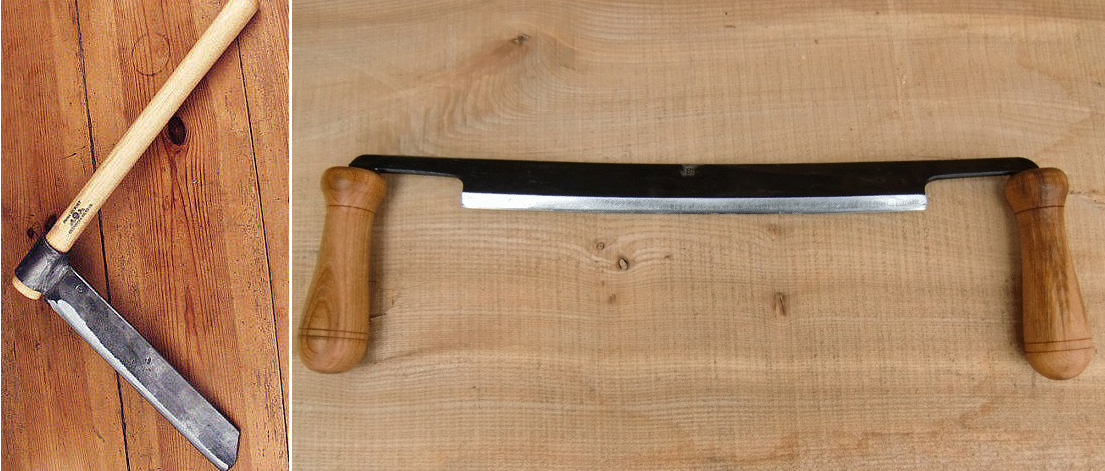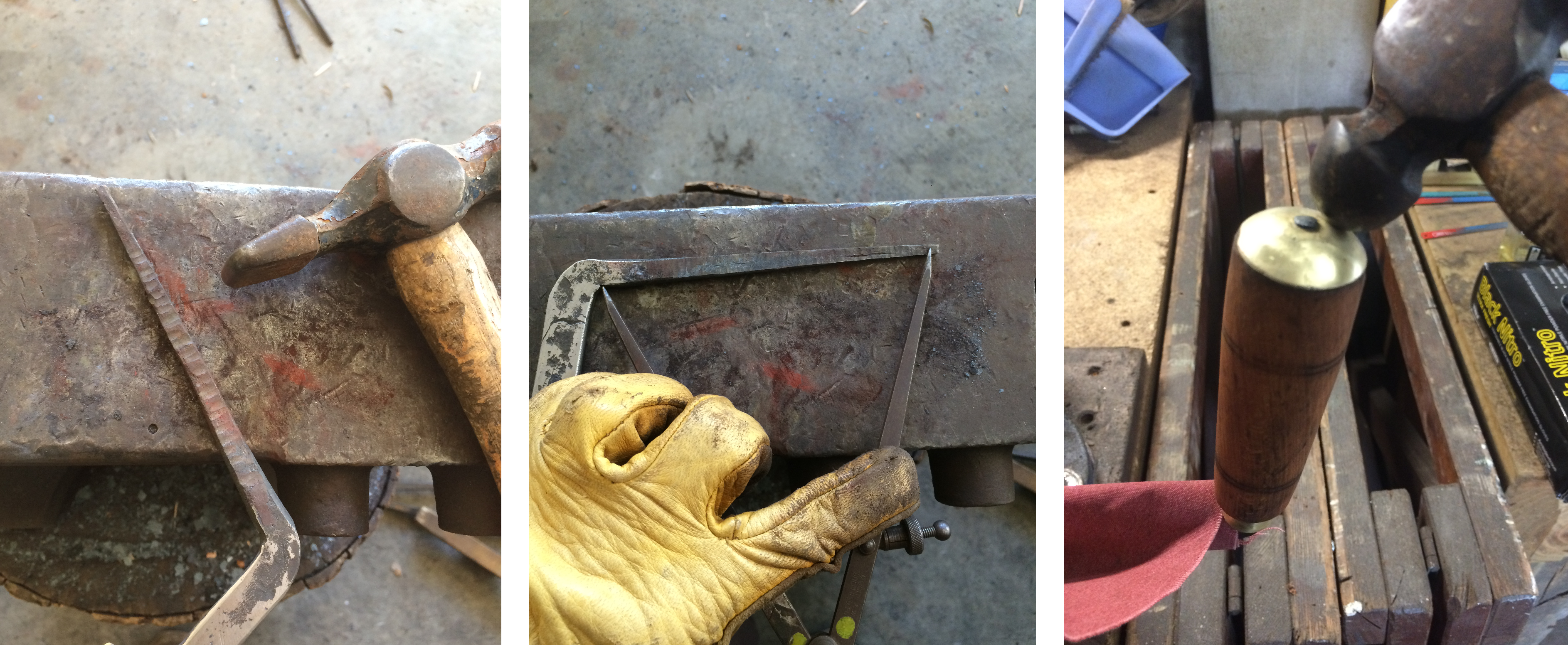Guildenstern the broken drawknife
Our story begins with two tools. Not, as one might expect, two chaps of less than impressive wit (Rosencrantz and Guildenstern spring to mind), but rather two actual tools. As in metal ones. Our first contender is the humble froe (left). Plain and simple but of stout constitution, the froe is designed for riving (that is, splitting) boards or shingles from logs. It is made to be struck, embedding it within the end grain of a piece of timber, before being used to lever the new board away from the parent log. By contrast, the drawknife (right) is keen and nimble, made for shaving timber pieces to shape and size.

The moral of this tale is an important one: A froe is not a drawknife and, in its turn, a drawknife is not a froe. It seems an obvious lesson, but one that we must nonetheless commit to memory. For when a drawknife (which is not a froe) is used as a froe (which it is not), then less than desirable things are known to occur:

This particular example is in such a sorry state because, once you have broken one handle off your drawknife, it is important to apply the scientific method to the problem and check that that happens EVERY TIME. It does. And so the quest was on to repair our fallen tool (which I am now unable to stop thinking of as Guildenstern) using medieval methods.
First things first, Guildenstern was razor sharp. In the interest of possessing the same number of fingers at the end of the project as I started with that pesky edge simply had to go! A few minutes with a file and he was once again safe to hold. The peened ends of the handles (limbs?) were filed away and the brass and timber sections removed.

We’re going to attempt to join Guildenstern’s arms back on using a scarf weld. The two pieces of metal are heated in the forge until they almost reach melting point, which in the case of wrought iron is 1,538 Celsius. When the two pieces are brought together their boundary layers are able to diffuse into each other, thereby welding the pieces together. Such a process can be tricky; Too hot and the pieces melt or burn. Too cool and they won’t fuse at all. The operation must also be completed quickly, as the hot metal will erode as it oxidises leaving Guildenstern with spindly little noodles for arms.
The ends of Guildenstern’s … body? Torso? (Really … this is getting out of hand) where forged out to match the dimensions of the limbs. The limbs themselves were also forged down slightly, to fatten the metal up and reduce losses to oxidation.

It’s finally Guildenstern’s time to shine. The body and limb were brought to a welding heat and brought together on the anvil. A few light blows are enough to set the weld. Two further welding heats are taken to complete the weld and blend in the edges. Here’s a quick video of the initial tack weld:
Afterwards we find Guildenstern, battered and bruised but at least now in two pieces instead of three. A small (yet irksome) weld line is apparent, though the well appears to be sufficiently strong.

Another weld and an hour with a file later and Guildenstern is back in one piece. Ready and enthusiastic, though annoyingly full of questions. A quick quench in some engine oil to reharden the blade, followed by a luxurious soak in a moderate oven (until golden brown!) to temper and we’re ready for re-assembly.

When we filed off the peens on the ends of the handles we ended up shortening them by a couple of millimetres. How then, do we re-peen the tangs once the handles are re-attached? The answer comes, as ever, through the judicious application of a hammer. As theses sections are soft wrought iron, a single pass with a cross-peen is enough to stretch the tangs and recover the couple of millimetres we lost. The dividers were set prior to the cross-peen pass, and the elongation in the tang is apparent.

The handles and brass components were all given a thorough polishing to remove years of neglect, before finally being finished with a coat of oil. As it turns out, Guildenstern was not, in fact, dead. Though he is most definitely still not a froe.

